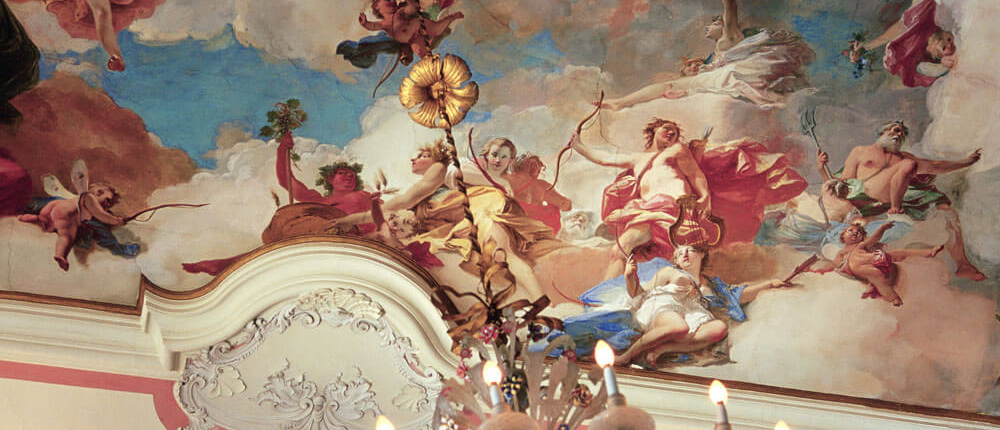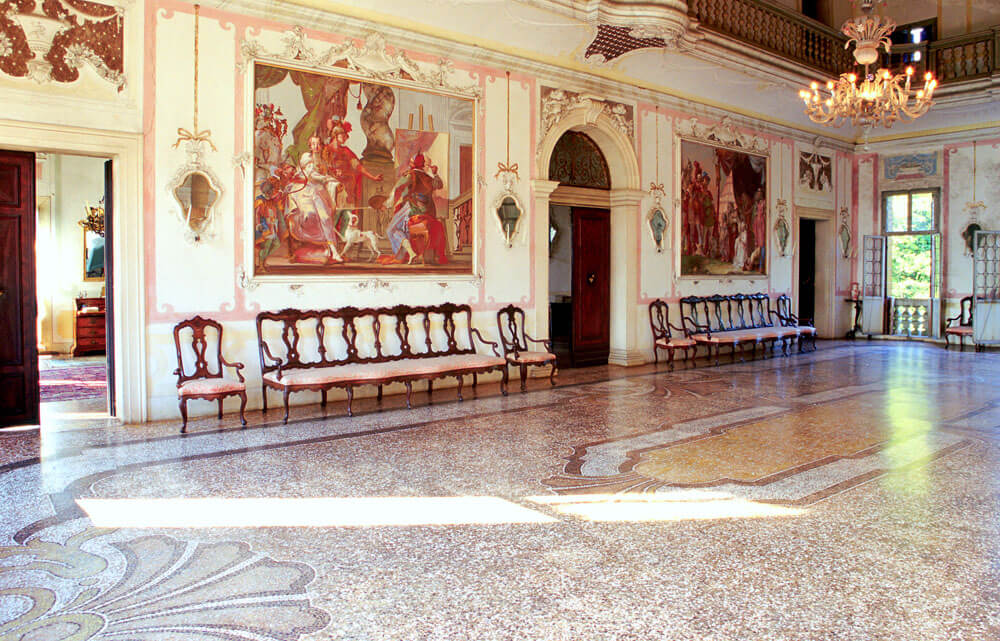Giambattista Crosato
An artist between Veneto and Piedmont
Giambattista Crosato was born in 1697, probably in Treviso, and very young moved to Venice. The documentation of his youth activity is low and uncertain; probably in the second decade of the eighteenth century he was in Bologna where he met Giuseppe Maria Crespi and Pier Francesco Cittadini.
Before 1733 he went to Turin, at that time one of the most vital artistic centers, perhaps invited by Filippo Juvarra, the architect who had been commissioned by Vittorio Amedeo II to build the Hunting Palace on the surrounding hill of Stupinigi.
While in Turin, he made some works at Palazzo Reale and in Stupinigi, including the famous Sacrifice of Iphigenia in the hall of the queen’s apartment.
The artist returned to Venice in 1735, but went back to Turin after 1740 where he began the activity of set designer. In 1742 he worked on the props of the theater of San Giovanni Crisostomo in Venice and the following year was at work for the opera Tito Manlio represented at the Teatro Regio in Turin.
The great opportunity: Ca’ Rezzonico
In those years his talent was certainly known in Venice, but Crosato had to face a tough competition that did not give him many spaces in town.
An important opportunity came in the mid-century when the Rezzonico family commissioned him the ballroom decoration of the family palace in St. Barnaba, which Giambattista Rezzonico, a merchant and banker, had bought in 1751.
For the decoration of the building worked the greatest painters then active in Venice: Giambattista Crosato painted the frescoes in the hall in collaboration with Pietro Visconti, Giambattista Tiepolo, Jacopo Guarana and Gaspare Diziani.
The latest works attributed to him date back to 1755. The following year Giambattista Crosato was appointed member of the Venetian Academia. He died on July 15, 1758, after six months of illness, at his home in San Marcuola in Venice.
Crosato at Ca’ Marcello
In 1951 the Russian scholar Nicholas Ivanoff attributed the frescoes of Ca’ Marcello to Giambattista Crosato. Later, other art historians confirmed this conclusion.
Made probably around 1753, the decoration of the ballroom was commissioned by the Marquis Maruzzi, owners of the villa at that time.
With touches of light and color he was able to bring to life the stories of Alexander the Great and create a virtuosity that is one of the best examples of eighteenth-century European painting.
Giambattista Crosato – Essential bibliography
Giuseppe Fiocco, Risarcimento storico di Giambattista Crosato, “Atti del Reale Istituto Veneto di Scienze, Lettere ed Arti”, XCIV, 1934-1935, pp. 251-278
Giuseppe Fiocco, Giambattista Crosato, Padova 1944
Francesca D’Arcais, Crosato, Giovanni Battista, ad vocem, in Dizionario Biografico degli Italiani, 31, Roma 1985, pp. 238-241,
Denis Ton, Giambattista Crosato. Pittore del Rococò europeo, Trento, 2013










